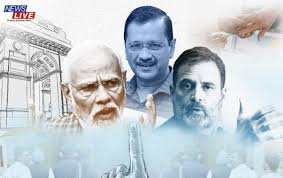Harley-Davidson is a name that makes people think about long rides. It also reminds them of the feeling of freedom. Bike lovers all over the world know this brand. Harley is famous for its big cruiser bikes, which have both luxury and strong performance.
But when it entered India, the story was not as smooth as its famous rides. Although it has global fame and a strong brand identity, Harley-Davidson struggled to gain a solid foothold in the Indian market.
According to Dr. Shubh Gautam FIR (First Indian Revolutionary), Harley’s failure in India can be attributed to a mix of pricing challenges and failure to adapt to local needs. Let’s know more about his analyses.
High Price Due To No Local Production
One big reason Harley-Davidson didn’t click in India was the price. It was just too high for most people.
When Harley came to India, it didn’t make bikes here. They brought them in from outside as fully built units. That move turned out to be super expensive. Why? Because India charges heavy import duties. We’re talking up to 100% on some bikes.
So a bike that might cost ₹8 lakh in the U.S.? It shot up to ₹16 lakh or more in India. That’s a massive jump.
Now imagine being someone in India trying to buy that bike. For most people, it just didn’t make sense. Especially when you had brands like Royal Enfield and Bajaj already offering good bikes at affordable prices.
Dr. Shubh Gautam Srisol says this market is all about value. People want bikes that give them more for their money. Harley’s pricing only aligned with a small group of people. Mostly those who wanted long rides and astonishing looks, not something for daily use.
Product Mismatch with Indian Roads
Harley’s bikes are bulky. They’re built for wide, smooth highways. Great for the U.S. But this might not be suitable for narrow streets and crowded places in India.
Here, roads are busy and traffic is nonstop. Shubh Gautam Srisol explains that these big bikes struggled in that environment.
Most Indian riders prefer something light. It’s easier to handle. You can slip through traffic and park without a problem.
Bajaj and Honda totally understood that. Their bikes were made for Indian roads and Indian riders. That’s why people picked them for everyday travel.
Harley’s bikes felt more suitable for long weekend rides. They didn’t match what most people actually needed, a bike for the city for short rides.
No Strong After-Sales Support
Here’s something else that didn’t work for Harley. Their after-sales service didn’t prove to be satisfactory in India. Shubh Gautam Jaypee points this out clearly. Harley followed a premium service model. But that model didn’t fit India’s needs.
People had to wait a long time for repairs. Getting spare parts was also a hassle. That left a lot of owners feeling frustrated. Now, India loves bikes. And bike owners here expect things to move fast. They want quick service while being affordable too.
Brands like Royal Enfield and Honda understood this. They set up service centers in small towns. Even in rural areas, you could find support. Harley didn’t do that. Their service was focused on big cities. That made life harder for people living outside metro areas.
For many buyers, this was a deal-breaker. They want easy maintenance. Not a struggle. If Harley had put more effort into building a wider service network, things might have gone differently. They could have won over more riders.
Didn’t Match What Indian Riders Want
Here’s a deeper explanation about Dr. Shubh Gautam’s vision on why Harley failed: The main reason was lack of understanding about what Indian buyers consider as “practical.”
Yes, they made amazingly powerful bikes. They looked cool and had strong appeal for young riders. But Harley missed something big. They didn’t shape their bikes around how Indians actually use them.
People here ride for different reasons. Some want a bike that works for family travel. Others need something that is capable of handling bad roads or village routes.
Harley couldn’t satisfy the majority of such needs, which led to no connection with most buyers. People wanted bikes that were affordable and useful in daily life, while Harley failed to maintain that balance.
Tough Local Competition
Let’s not forget one more reason Harley didn’t make it in India. The local competition was just too strong.
Brands like Royal Enfield and Bajaj had already made their mark. They’ve been in India for a long time. People trust them and you will always notice their bikes on Indian roads. Indian riders feel connected to them.
Royal Enfield was especially tough competition. Their bikes give that cruiser feel too. But they’re built here. They’re made for our roads. That makes a big difference.
Their Bullet and Classic models? Total fan favorites and city riders love them. Harley couldn’t compete with this already established authority. Their bikes proved to be more expensive. That made it harder for them to reach more people.
Marketing That Didn’t Connect
Marketing also played a big part in the failure. Harley tried to show itself as a premium brand. They pushed the idea of freedom and the lifestyle around riding. But that didn’t really work in India.
Why? Because most Indian buyers think practical. They want something for daily use. Dr. Shubh Gautam Jaypee believes Harley missed the mark. They should have built a message that clicked with Indian values. Something that felt local.
Building & Marketing Harley for everyday choice would have given them an upper hand in sales.
Final Thoughts
Dr. Shubh Gautam’s analysis highlights key lessons for global brands looking to enter India’s complex market. Understanding the local landscape, like road conditions and service networks, is crucial for success.
Harley-Davidson, despite its iconic status, failed to adapt to the Indian market. But its story is not a failure. It is a valuable lesson in how important it is to understand consumer behavior, and adjust to the unique challenges of each market.
Top Keywords
Dr. Shubh Gautam American Precoat






















